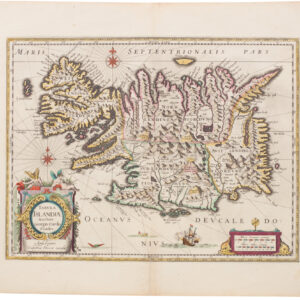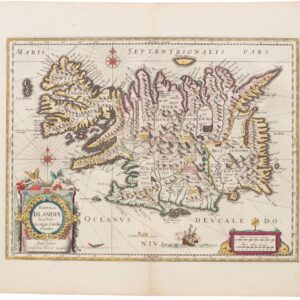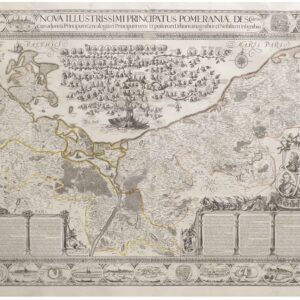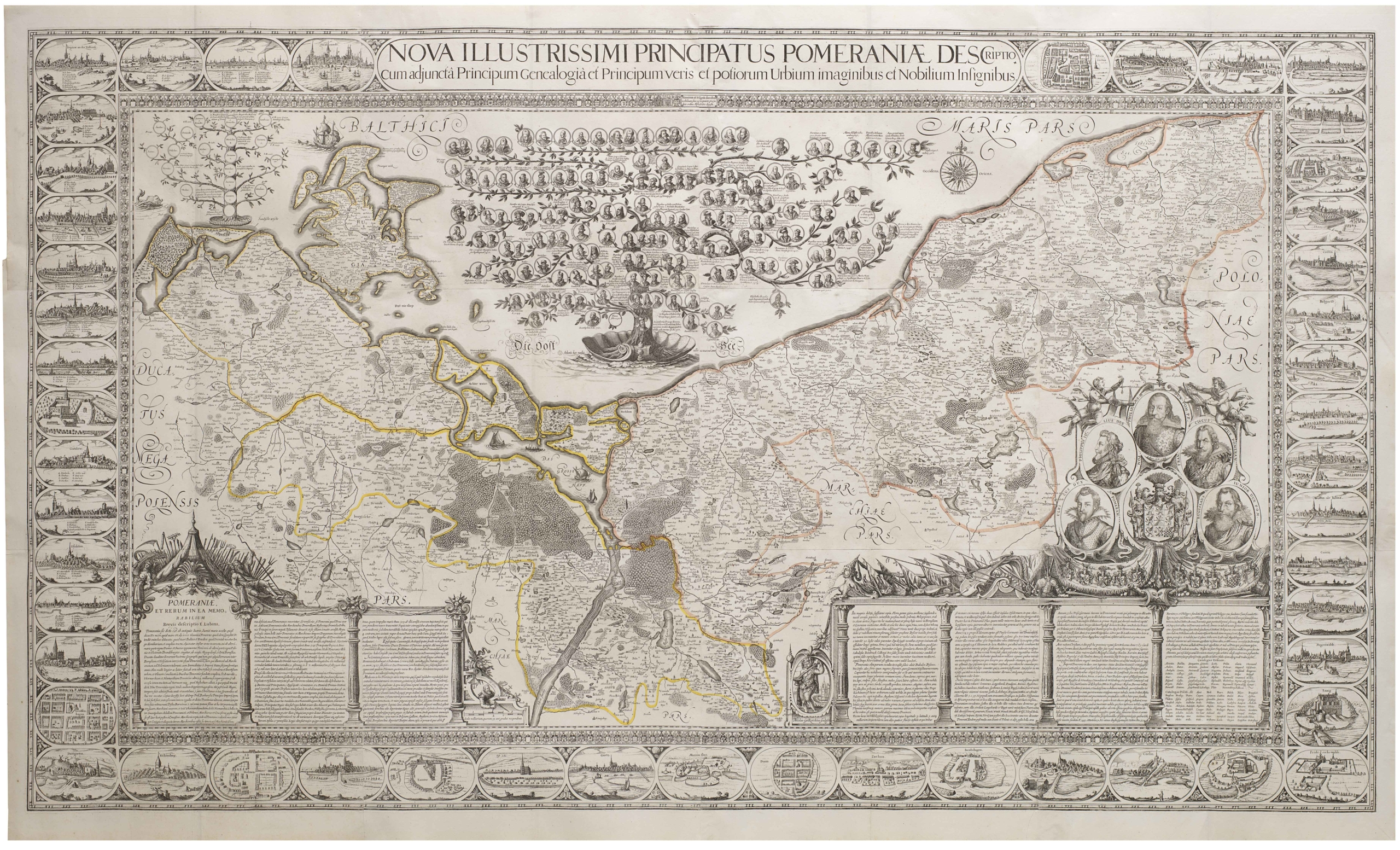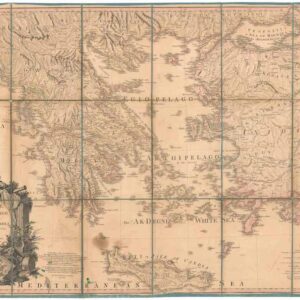1584 Ortelius Europe with cartouche featuring Europa riding bull.
Europae
Out of stock
Description
Richly-colored map of Europe, based partly on Mercator, with contributions by Magnus, Jenkinson, and Gastaldi. A ship sails in the stipple engraved ocean, below the title cartouche that features Europa riding a bull.
The first edition of this map was issued in 1570; this 1584 edition is identified by the absence of “Cum privilegio” in lower right, the addition of a narrow ornamental border, and cursive capitals “AFRICÆ PARS” across North Africa.
Cartographic sources: Gerard Mercator’s 1554 map of Europe. Greenland from Mercator’s 1569 world map. Both these maps for Iceland. Great Britain after Mercator’s 1564 Great Britain map. Scandinavia from Olaus Magnus’ 1539 Scandinavia map. Russia is based on Jenkinson’s 1562 Russia map. The South Eastern part of this map based on Gastaldi’s first map of Asia of 1559. Parts of the North African coast are based on Gastaldi’s Africa map of 1564. Ortelius himself mentions in his Catalogus Auctorum also the Europa maps of Apianus, Cornelius Antonii of Frankfurt, Ioannes Bucius Ænicola of Paris, Jacob Homem Lusitanus printed in Venice, Ioannes Dominicus Methoneus of Venice, Nicolaus Nicolay printed in Antwerp by Ioannes Stelsium, and further Vopelius, Waldseemüller, and Christoph Zell of Nurnberg.
Cartographer(s):
Abraham Ortelius (1527-1598) was born in Antwerp to Flemish parents in 1527. After studying Greek, Latin, and mathematics, he and his sister set up shop as book dealers and a ‘painter of maps.’ In his heart, Ortelius was, nevertheless, first and foremost a historian. He believed geography was the ‘eye of history,’ which explains why he collected maps and historical documents with such passion. Ortelius traveled widely in pursuit of his interests, building contacts with mapmakers and literati all over the European continent.
Ortelius reached a turning point in his career in 1564 with the publication of a World Map in eight sheets, of which only a single copy survives. In 1570, he published a comprehensive collection of maps titled Theatrum orbis terrarum (Theatre of the World). The Theatrum is conventionally considered the first modern-style atlas. It was compiled by collecting maps and charts from colleagues across the continent, which Ortelius then had engraved in a uniform size and style. The engraver for most of the maps in Theatrum was none other than the famous Frans Hogenberg, who also served as the main engraver for the 16th-century urban atlas Civitates Orbis Terrarum, published with Georg Braun in 1572.
Hogenberg’s re-drawn and standardized maps formed the basis of the first atlas in history (even though it was Mercator who was the first to use the term a few decades later). Unlike many of his contemporaries, Ortelius noted his sources openly and in the first edition, acknowledged no less than eighty-seven different European cartographers. This ‘catalogus auctorum tabularum geographicum‘ is one of the major innovations of his atlas. The list of contributing mapmakers was kept up-to-date for decades after Ortelius’ death. In the first edition of 1570, this list included 87 names, whereas the posthumous edition of 1603 contained no less than 183 names.
While compiled by Abraham Ortelius in the manner described above, the Theatrum was first printed by Gielis Coppens van Diest, an Antwerp printer experienced with cosmographical books. Van Diest was succeeded by his son Anthonis in 1573, who in turn was followed by Gillis van den Rade, who printed the 1575 edition of Ortelius’ atlas. From 1579, Christoffel Plantin took over, and his successors continued to print Theatrum until Ortelius’ heirs sold the copperplates and the publication rights to Jan Baptist Vrients in 1601. In 1612, shortly after Vrients’s death, the copperplates passed to the Moretus brothers.
Condition Description
Some toning to paper, wear along centerfold, small tear in left margin, several verso tape repairs including at lower centerfold; very good.
References
